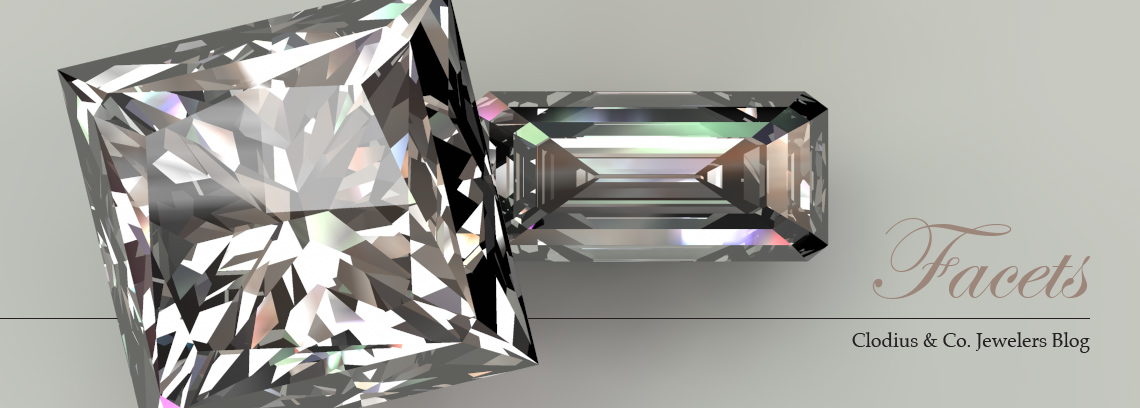Jewelry Blog Rockford, IL
Born of a Cosmic Collision, Lonsdaleite Is Harder Than Any Material Found on Earth September 14, 2022
Lonsdaleite, a mysterious hexagonal form of diamond that's even harder than the common cubic variety, is likely the result of a catastrophic collision between a dwarf planet and a large asteroid 4.5 billion years ago, according to a new study.
An international team of researchers confirmed the existence of the cosmic gem in slices of ureilite meteorites, a rare type of space rock that is believed to be material from the mantle of dwarf planets. The team studied 18 ureilite samples that had been sourced in northwest Africa and southern Australia.

“We have discovered the largest lonsdaleite crystals known to date that are up to a micron in size – much, much thinner than a human hair,” noted RMIT Professor Dougal McCulloch, who was one of the senior researchers involved in the study.
So far, the exact hardness of lonsdaleite has been difficult to confirm because the minute sample sizes do not allow for a scratch test. Lonsdaleite is believed to be 58% harder than an Earth-sourced diamond, which is saying a lot because conventional diamonds register a perfect 10 on the Mohs hardness scale. Might the scale need to be amended in the future to include a 10+ or an 11?
McCulloch and his team from RMIT University, Monash University, Australia's Commonwealth Scientific and Industrial Research Organisation (CSIRO), the Australian Synchrotron and Plymouth University used advanced electron microscopy techniques to study the slices of ureilite and create snapshots of how lonsdaleite and regular diamonds formed in those samples virtually side by side. The study was led by geologist Professor Andy Tomkins, an ARC Future Fellow at Monash University’s School of Earth, Atmosphere and Environment.
“There’s strong evidence that there’s a newly discovered formation process for the lonsdaleite and regular diamond, which is like a supercritical chemical vapor deposition process that has taken place in these space rocks, probably in the dwarf planet shortly after a catastrophic collision,” McCulloch said.
“Chemical vapor deposition is one of the ways that people make diamonds in the lab, essentially by growing them in a specialized chamber,” he said.
The scientists believe that the lonsdaleite was somewhat replaced by diamonds as its environment cooled and pressure decreased.
In a related study from April of 2021, scientists at Washington State University’s Institute for Shock Physics blasted a dime-sized graphite disk at a wall at 15,000 mph (24,100 km/h) to emulate the high-energy impact that can turn carbon-based material into super-strong hexagonal diamonds.
The researchers learned that as soon as the disk crashed into a barrier, it was rapidly transformed into a hexagonal diamond. Immediately after impact — but before the material was obliterated — the researchers produced a small sound wave and used lasers to measure its movement through the hexagonal diamond. As a rule, sound moves fastest through stiffer materials, such as cubic diamonds. In this latest experiment, sound moved even faster through the lab-created hexagonal diamonds.
Based on that result, the scientist surmised that the hexagonal diamonds were stiffer than cubic diamonds. Stiffness is defined as a material’s ability to resist deformation under a force or pressure.
If these findings are backed up and lonsdaleite diamonds can be turned out commercially, these super-hard materials will likely find their way quickly into mining and industrial applications, such as drill bits and other cutting devices.
“Nature has thus provided us with a process to try and replicate in industry," said Tomkins.
The results of the most recent study were published in Proceedings of the National Academy of Sciences.
Credit: Professor Andy Tomkins (left) from Monash University with RMIT University PhD scholar Alan Salek and a ureilite meteor sample. Image courtesy of RMIT University. Urelite photo by Wilde-Kutsch, CC BY-SA 4.0, via Wikimedia Commons.
About the Author
With over 250 years of combined experience, our staff truly understands why you purchase jewelry, and what it means to you. Clodius & Co. is known as Rockford's custom jeweler and more. Why? Because we like to get acquainted with our customers while we help them select or create their jewelry.
Other Recent Blog Entries
Gift with Purchase – A Special Valentine’s Offer
New Year, New Jewels: Start 2025 with Sparkling Style
The Enchanting World of Peridot: Discover Its Unique Beauty at Clodius & Co.
Honoring Independence Day with Clodius & Co Jewelry
Celebrate Mother's Day in Style: Inspiring Gift Ideas from Clodius & Co.
Diamonds Unveiled: A Comprehensive Guide to Understanding Diamonds with Clodius & Co.
















